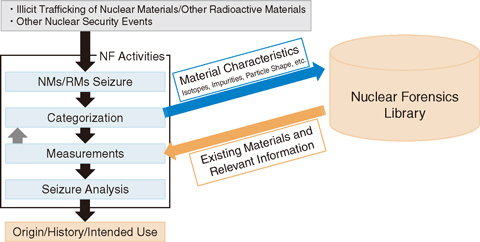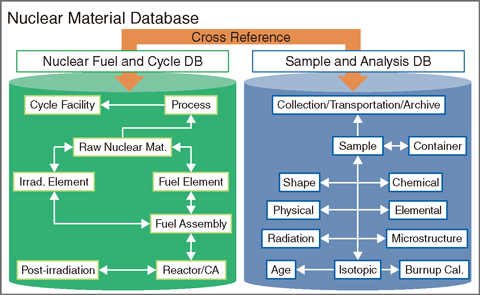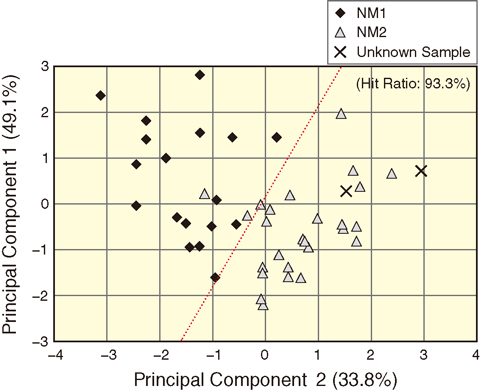
Fig.11-2 Nuclear forensics library and nuclear forensics activities

Fig.11-3 Outline of the nuclear material database structure of the nuclear forensics library in JAEA

Fig.11-4 Evaluation example of the data analysis tool
Recently, illicit trafficking of nuclear materials and other radioactive materials has been an issue of concern to international society, and many countries have been making efforts to establish the capabilities to perform nuclear forensics activities. A nuclear forensics library (NFL) is generally defined as an organized collection of data and information about nuclear and other radioactive materials produced, used, or stored in the past. When the illicit trafficked nuclear or radioactive materials are detected, they are seized and their physical and chemical characteristics are measured. Then, the measurement data is matched against existing materials registered in the NFL, and suspect materials are identified with their historical information. The final goal of nuclear forensics analysis is to identify the origin, history, and intended use of the seized materials (Fig.11-2). In this context, an NFL is one of the most important elements of nuclear forensics activities.
Currently, the development of NFL has been conducted by some countries and the concept of a national NFL (NNFL) that collects the data of all the materials in a country and that is used during inquiries from other countries, is the most popular concept in current international society. The prototype NNFL project at JAEA also follows this concept. JAEA has continued to develop a prototype of NNFL based on data related to nuclear materials and other radioactive materials that it possessed during past research activities. By the end of last year, the development a nuclear material database (NMDB) with a basic data-handling system (Fig.11-3) was completed and the computational multivariate analysis tools to identify illicit materials were developed (Fig.11-4). Furthermore, JAEA participated in a virtual table top exercise on NNFL hosted by the International Technical Working Group for Nuclear Forensics (ITWG).
The performance of JAEA in the exercise was evaluated as well, and the knowledge, lessons, and experiences obtained through the exercise were applied to the NFL development project at JAEA.
The prototype NNFL will be improved by some development items such as a radioactive material database and a nuclear forensics image analysis tool. In the future, it is expected that the prototype NNFL, the analytical tools, and the knowledge obtained from our development activities could be utilized by responsible national authorities for nuclear forensics after the national nuclear forensics regime is established in Japan.
This study was partly supported by the Ministry of Education, Culture, Sports, Science, and Technology of Japan (MEXT).
<Previous: 11 Development of Science & Technology for Nuclear Nonproliferation | Next: Promotion of Collaboration >